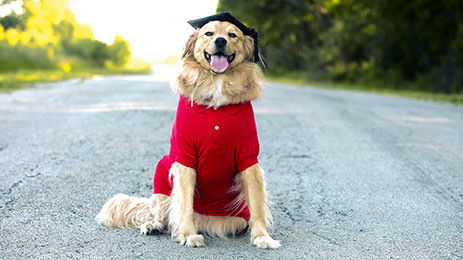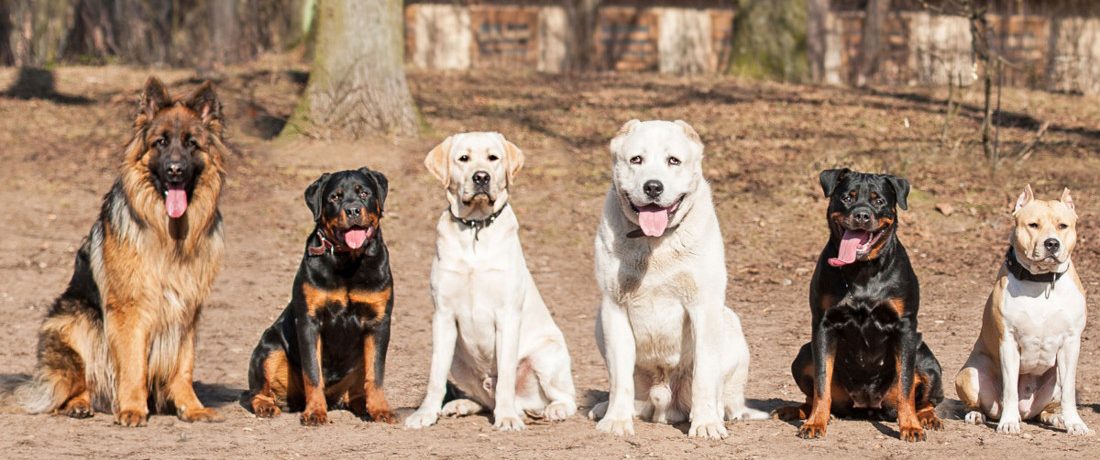Exactly how to Select the Right Technique for Successful Dog Training
Wiki Article
Vital Tips for Successful Dog Training: A Guide for Pet Owners
Efficient dog training is a complex process that needs a critical approach customized to both the family pet's temperament and the owner's objectives. Comprehending how to browse these challenges can significantly improve the training experience, eventually changing the relationship in between owner and dog.Understanding Dog Actions
Comprehending pet habits is vital for effective training and promoting an unified connection between pooches and their owners. Pet dogs communicate mainly via body movement, articulations, and actions, making it vital for owners to translate these signals accurately. Acknowledging a pet's posture, tail setting, and ear orientation can offer understandings into its emotion. For example, a wagging tail does not constantly suggest happiness; it can likewise indicate exhilaration or anxiousness.
Socialization plays a significant duty in pet behavior; exposure to various settings, people, and various other pets can significantly impact a pet's personality. Aspects such as breed features and specific character should assist training methods, as some types may have specific behavior characteristics that demand tailored techniques. By comprehending these elements, proprietors can create a helpful setting that motivates positive habits, leading to effective training outcomes and a deeper bond with their pet dogs.
Establishing Regular Commands
Effective interaction with your dog starts with developing constant commands. This fundamental element of training is vital for promoting understanding in between you and your pet. Uniformity in the commands you make use of guarantees that your dog can dependably connect particular words or phrases with the preferred habits.When choosing commands, pick clear, distinct words that are simple to separate and claim from one another. Prevent using similar-sounding commands that might confuse your canine. Utilizing "rest" and "remain" is appropriate, but "rest" and "hit" could lead to misunderstandings.
Furthermore, keep the very same tone and volume for every command. Dogs are sensitive to vocal cues, so varying your tone can produce complication.
It is equally essential to make certain that all relative are on the exact same web page pertaining to the commands utilized. A united front in command usage will prevent combined signals and strengthen the knowing process.
Positive Reinforcement Strategies
The power of favorable reinforcement in pet training hinges on its ability to encourage wanted habits via benefits and appreciation. This strategy is grounded in the concept that behaviors adhered to by positive results are a lot more likely to be duplicated. By incorporating favorable support into your training routine, you can efficiently form your canine's actions in a positive manner.To implement positive support, it's vital to recognize what inspires anonymous your dog, whether it be deals with, playthings, or verbal appreciation. When your canine executes a desired activity, read the full info here such as resting on command, right away compensate them with a treat or love. This organization between the command and the positive end result strengthens their understanding.
It's crucial to timing the benefits properly; supplying the reinforcement within seconds of the wanted behavior assists your pet make the link (dog training). Additionally, consistency is crucial-- make sure that all relative make use of the exact same commands and incentive systems to avoid confusion

Progressively, you can decrease the frequency of deals with as your pet learns the habits, transitioning to commend or recurring rewards. This method not only cultivates a strong bond between you and your canine however likewise advertises a favorable learning environment, making training a satisfying experience for both.
Socialization and Communication
Constantly revealing your dog to a variety of environments, people, and other animals is essential for their social development. Socialization must start early, preferably throughout the vital window of 3 to 14 weeks, when young puppies are most receptive to new experiences. Older pet dogs can likewise benefit from ongoing socializing initiatives.check out here Present your canine to different settings, such as parks, pet-friendly shops, and urban areas. This exposure aids them adjust to different stimuli, lowering anxiousness and concern actions. Motivate positive communications with other dogs and individuals, making certain that these experiences are controlled and secure to promote confidence.
Utilize structured playdates with well-mannered pets, as this can improve your dog's social abilities and teach them proper behavior. Obedience courses and training sessions also supply outstanding possibilities for socializing, permitting your dog to connect with others in a supervised atmosphere.
Monitor your pet dog's body movement throughout interactions, as this will certainly help you evaluate their convenience degree. Gradually boost direct exposure to more difficult scenarios while making sure that each experience declares. A well-socialized pet dog is more probable to show well balanced actions, making them a delight to have in any kind of setting.
Attending To Usual Training Difficulties
Every pet proprietor will come across training obstacles eventually, despite their canine's age or socializing degree. Recognizing common concerns such as stubbornness, distractions, and fearfulness can assist in creating reliable methods for improvement.
Slowly introduce interruptions as the dog becomes extra efficient in commands. Short, regular training sessions are likewise effective in maintaining focus.
Terror can prevent a pet's understanding process. Gradual desensitization to the resource of concern, combined with favorable support, can assist reduce anxiety. Perseverance is vital; never ever require a dog right into a circumstance that causes distress, as this might intensify the concern.
Eventually, understanding and dealing with these usual difficulties with a structured technique will foster an extra efficient training experience, strengthening the bond in between canine and proprietor while advertising efficient understanding.
Final Thought
In summary, successful dog training depends on a detailed understanding of canine habits, the facility of consistent commands, and the application of favorable support methods. Socializing plays a critical function in creating well-adjusted animals, while resolving common training difficulties needs patience and versatility. By applying these vital approaches, animal proprietors can cultivate a strong bond with their dogs and advertise desirable habits, ultimately resulting in an unified relationship between people and their canine friends.Understanding dog habits is essential for effective training and promoting an unified connection between dogs and their proprietors.Socializing plays a significant role in canine habits; direct exposure to different settings, individuals, and other animals can considerably affect a canine's temperament.The power of favorable reinforcement in dog training exists in its capacity to urge desired behaviors through rewards and praise. By integrating positive reinforcement into your training regimen, you can efficiently shape your canine's behavior in a constructive manner.
In summary, effective pet training counts on a comprehensive understanding of canine habits, the establishment of constant commands, and the application of positive reinforcement strategies.
Report this wiki page